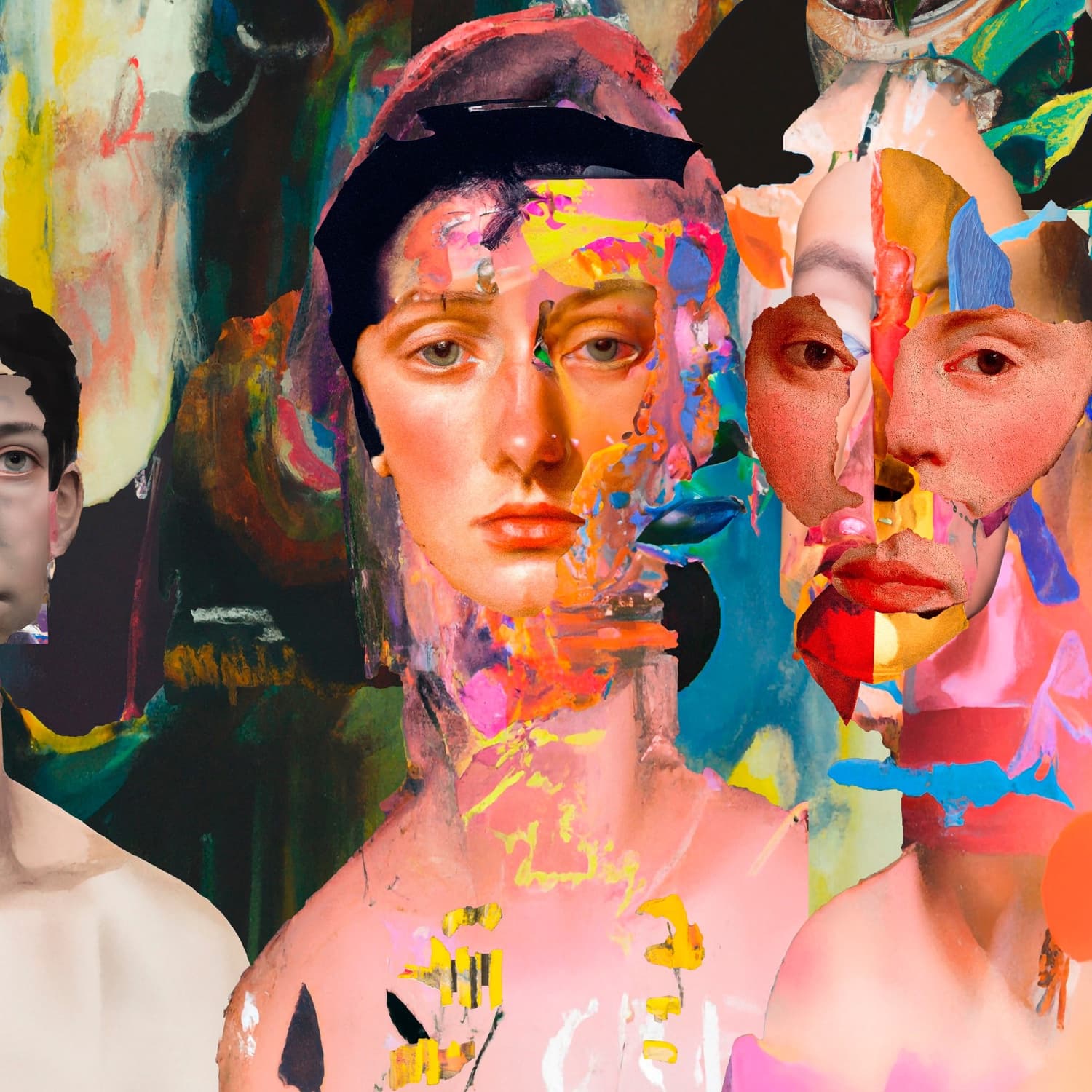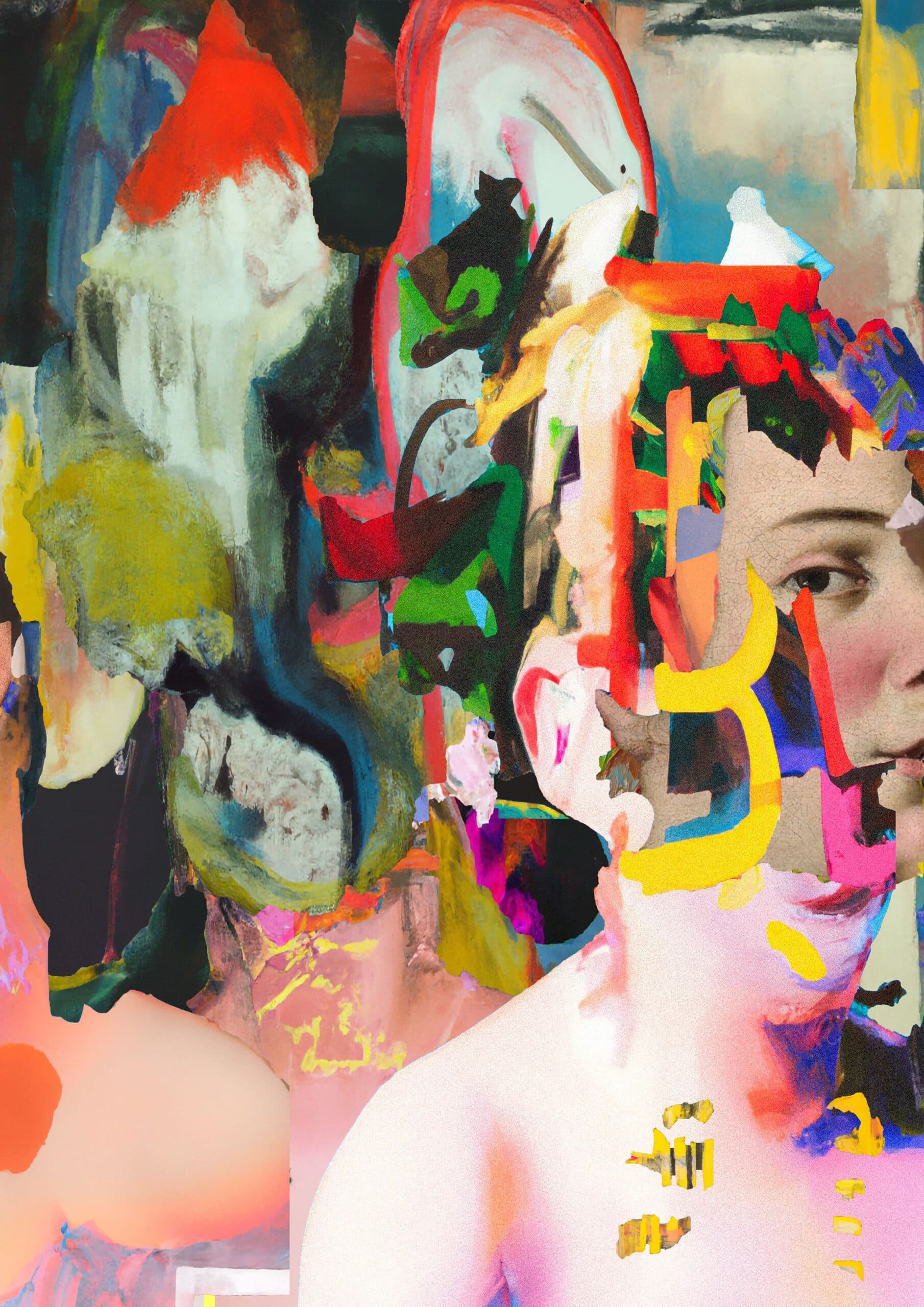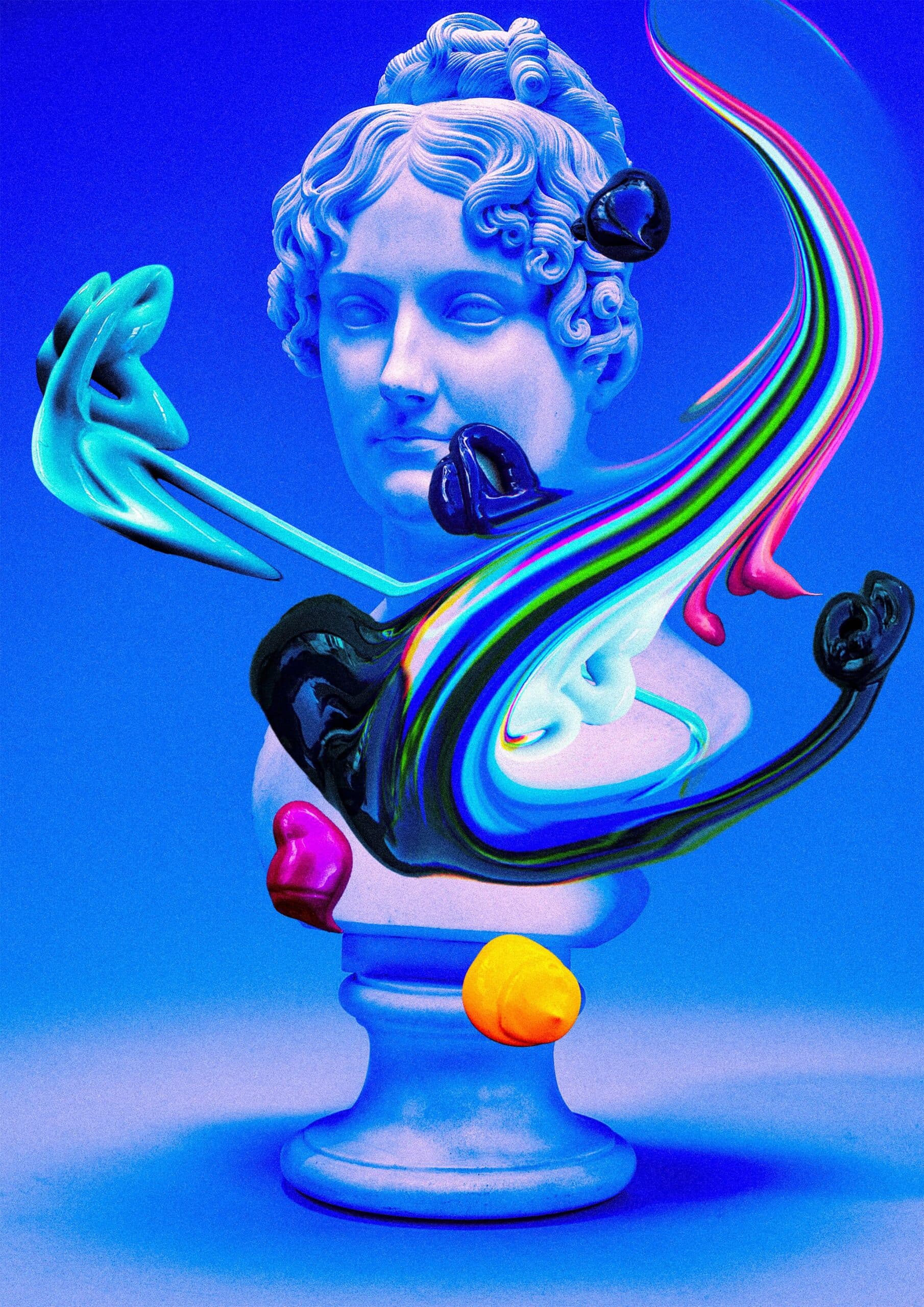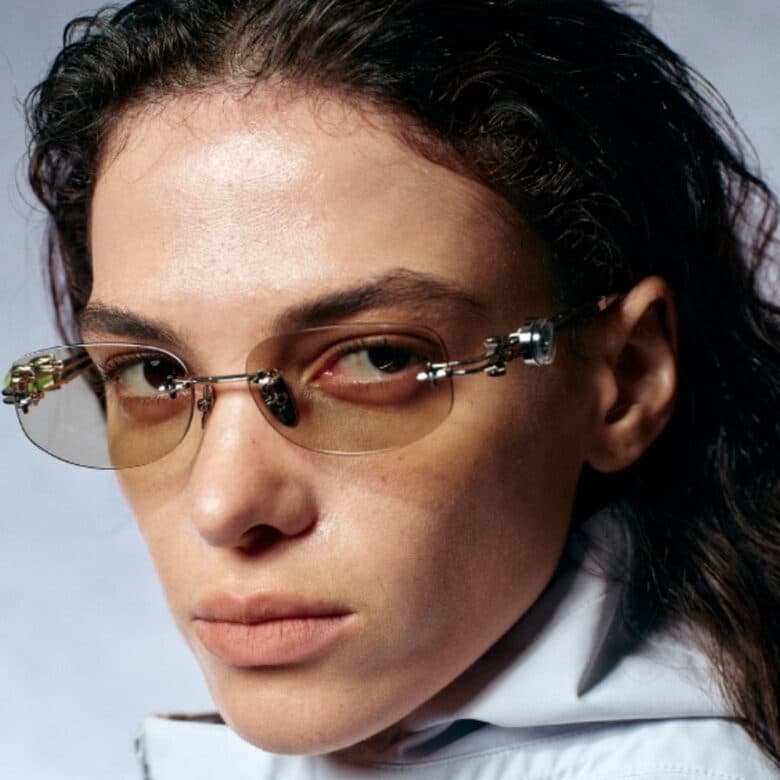How SnowSkull is changing the conversation around digital art

When SnowSkull began NoMansLand: Re-constructions of the Artist as a Young Human, it operated as something of an AI-assisted inquiry into identity, selfhood and authorship. The premise was simple: What would happen when the Welsh artist fed his own work into an AI programme, only to reconfigure the output into new, hybrid forms?
The results of these tests are a chaotic fusion of glitchy digital gradients, bright colours and partially deconstructed faces. At times, they blur the line between mediums. Is the crackling paint across a classical portrait real, or a digital add-on? Is the paper really peeling from the surface, or is that an imprint from SnowSkull’s dialogue with the machine? While these descriptions sound a touch apocalyptic, NoMansLand is unmistakably lively — a screenshot of a world where our relationship to technology is one of excitement, not scepticism or fear.
Born Matthew Bradley Evans, SnowSkull’s career has followed a somewhat atypical trajectory. After a ten-year stint touring as a musician, he landed at Goldsmiths. There, studying Fine Art, he learned the classics: oil, acrylic, Rembrandt, the Surrealist Cut-Up Movement. But this was the 2010s, an age of new technologies and new potentials. Everything from Siri to NFTs, deepfakes and generative programmes were pointing in the direction of a new tool. When ChatGPT launched in 2022, the boom had finally arrived — and SnowSkull found himself among a vanguard of artists working at the forefront of the digital revolution.

Naturally, some critics viewed digital mediums as an unimaginative and inauthentic threat to ‘real’ art. When The Portrait of Edmond de Belamy sold for nearly half a million at Christie’s in 2018, the art world erupted in a frenzy. The first painting created by an algorithm to be sold at an auction house, it raised questions about the nature of art and who can create it. After all, who truly owns an amalgamation of fifteen thousand paintings spanning the fourteenth to twentieth centuries?
But times are changing, and digital art is everywhere. With the value of AI in the art market expected to grow from three billion today to over forty billion by 2033, artists like SnowSkull are leaning in. “Yes, these tools challenge authenticity and ownership, but they also build on a lineage of innovation,” he says. Much like the photography and the printing press before it, digital art and AI are powerful new additions to the artist’s toolbox. “The possibilities feel endless.”
Here, we chat with SnowSkull about his relationship to technology, the lines between analogue and digital practices and what AI art means for the future.

Tell us about how you discovered digital art.
I began with acrylic on canvas, but over time I started using digital technology to collage paint, paper and elements of previous works. Digital collage offers a calmer process for me. It allows me to work with patience and peace of mind, whereas painting can feel more intense and unpredictable. I often use painting now as a space to experiment, creating material that I can later rework digitally. I’m still layering, cutting, and composing, just in a different medium. In the past I experimented with video, sculpture, sound and anaglyphic painting. This all feeds into the digital work. The possibilities with digital collage feel endless, but the conviction and thought behind each piece remains the same as when I paint on canvas. For my next collection of works, I’m planning to return to painting and combine both the physical and digital aspects of my work.
Do you use AI as a collaborator, a mirror, or a tool?
In NoMan’sLand, I treated AI as material, almost like information. I fed my old paintings into it and manually collaged the outputs — much like working with magazine cuttings in a physical collage. In that sense, AI functioned as a tool, something I could cut, layer and recompose into something new. At the same time, the project was a collaboration between my present and past self, so AI also became a mirror. It reflected my work back at me, reframed and reimagined. So yes, AI was all three: tool, mirror and collaborator. But NoMansLand is a stand-alone project, AI isn’t central to everything I make.

How do you respond to critics who view digital tools as ‘lazy ’or ‘unartistic’?
I think it comes from fear — fear that tradition is being replaced, or that creativity is being cheapened. I understand that reaction, but I don’t agree with it. For me, AI sits within the same lineage as any other tool. Nobody calls a photographer lazy for choosing a camera over a brush, or a printmaker unartistic for using a press. AI isn’t a driving force in itself. It can’t think or create independently. The artist still provides the concept and the vision. Human beings are the artists. At the same time, I completely understand that AI carries dangers. It’s already impacting work in the creative industries, and it feels like you can’t always trust what you see or read. There are also bigger questions around power.
You’ve placed your digital work in dialogue with artists like Rembrandt. Do you think AI art disrupts tradition, or does it extend it?
I referenced Rembrandt in the project title partly as a play on Portrait of the Artist as a Young Man, used both by Rembrandt and James Joyce. It was about reflecting on self-portraiture, identity and experimentation both literally and figuratively. In that sense, NoMansLand isn’t about breaking away from tradition, but about expanding it. On one hand, these tools are disruptive, they challenge ideas of authorship, originality and the value of the artist’s hand. But at the same time, they extend tradition, because they build on a lineage of innovation. I also see AI and digital art forming their own traditions. Many artists working with these tools reference, remix and re-contextualise historical art. In my own work, that comes through in reconstruction and reuse. Tradition isn’t fixed. I think it evolves when we reshape and reimagine it through the tools of our time.

What is one thing you’re waiting for the technology to be able to do?
I don’t think I’m waiting for technology to do something specific, I’m more interested in how it keeps evolving and how artists adapt to it. But one thing I guess I’d love technology to do is bridge the gap between the digital and the physical more seamlessly. Imagine being able to “print” digital work in actual paint, so it carries the same texture and presence as a canvas. Too often, the hours of craft behind digital work get overlooked because the final output can be resized, reproduced or dismissed as “just a print.” That would bring a tactile quality back into the work, allowing it to have a similar value to a painting. It would extend my practice in a way that feels natural and organic to what I do.
Where do you want your work to take you next?
I want my practice to keep moving into new territory, whether that’s returning to painting or experimenting with new technologies as they emerge. Personally, I see it as a continuous journey. I really want to delve more into immersive, installation and XR work, and that learning process is really inspiring for me. I don’t want to be limited to a specific medium. I want to exhibit and collaborate more with artists working in all different styles and disciplines and to keep moving forward and growing as an artist.
- WriterJoshua Beutum
- Image CreditsSnowSkull
- Portrait Image CreditDaniel Alford

